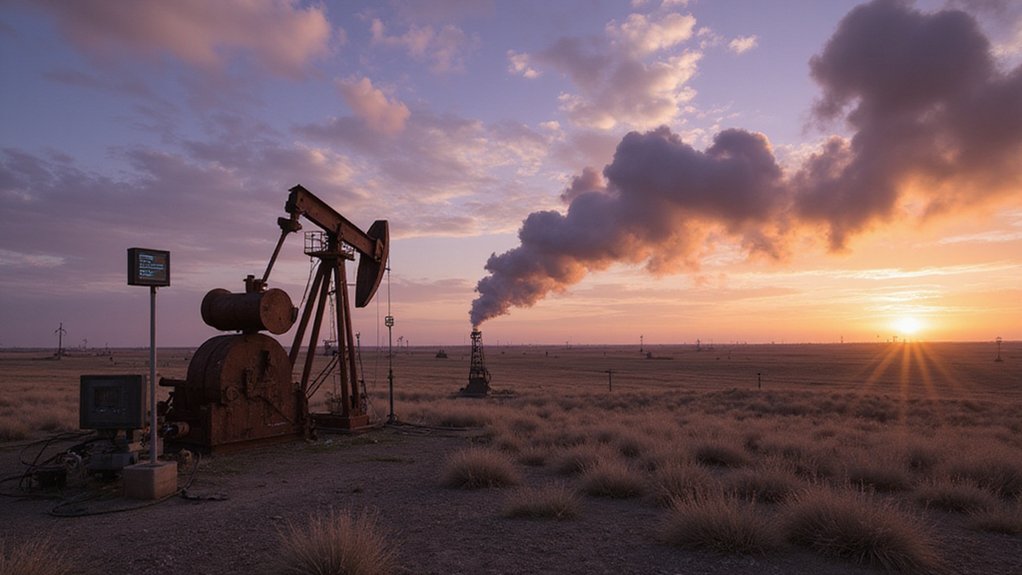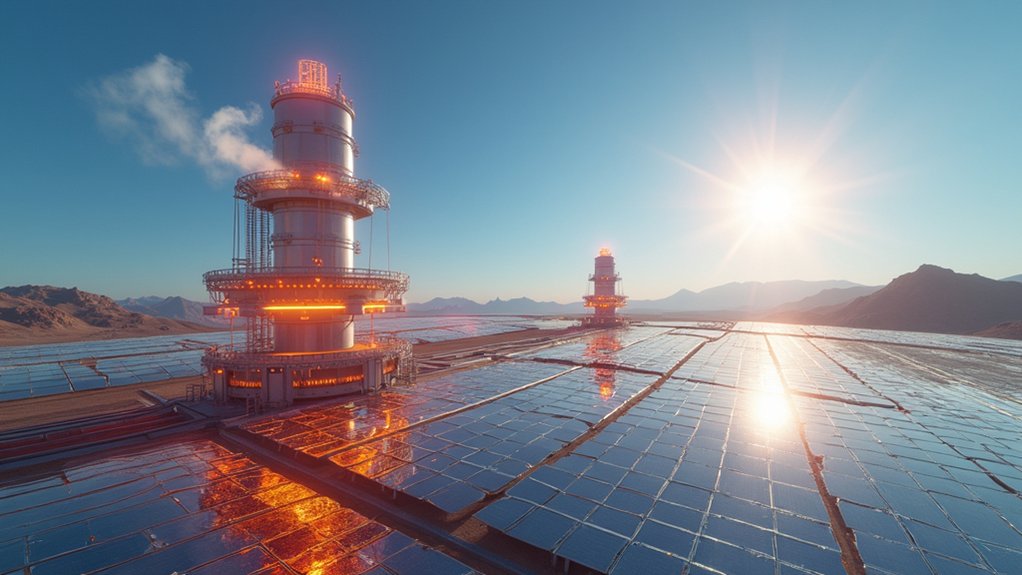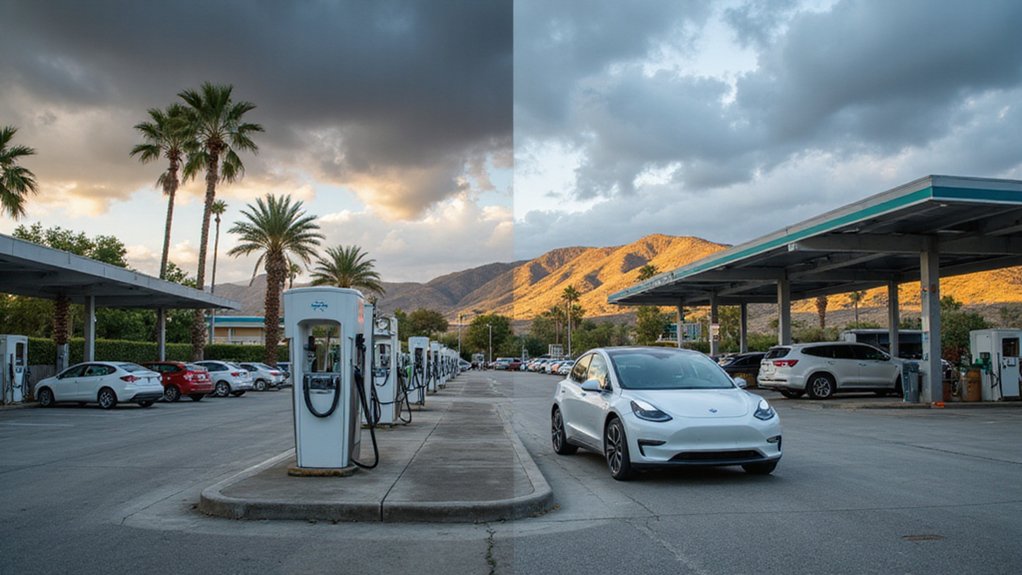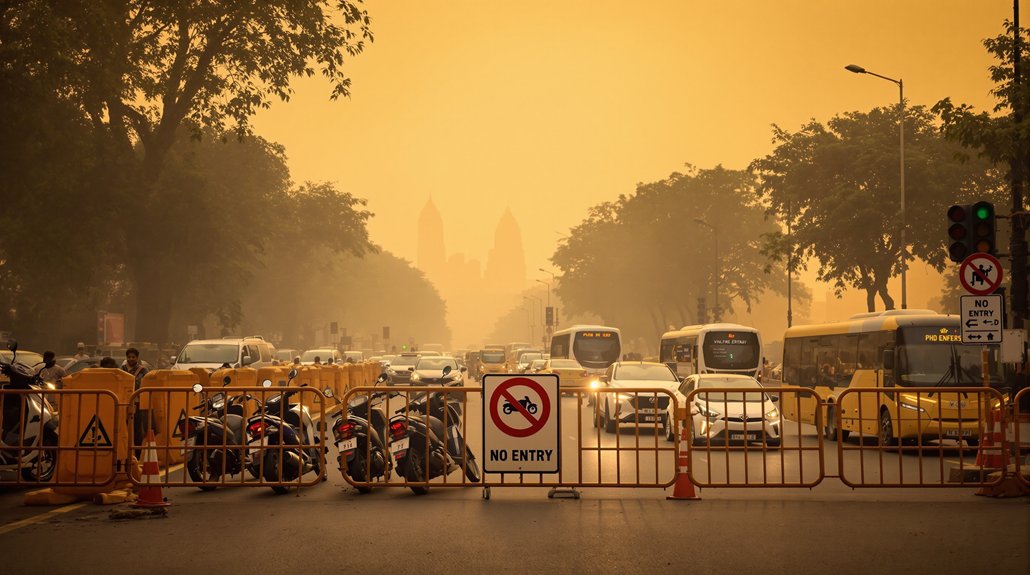McGill researchers just exposed a massive cover-up. Canada’s dormant oil wells are spewing 230 kilotonnes of methane yearly—seven times what the government claims. That’s pollution equivalent to 1.5 million cars. One abandoned Alberta well alone pumps out enough gas to heat a home for 34 years. With 425,000 inactive wells across the country and only 0.1% actually measured, the real numbers could be even worse. There’s more to this methane mess.
A hole in the ground shouldn’t be this complicated. But when McGill University researchers started measuring methane emissions from Canada’s dormant oil wells, they stumbled onto something that makes the government look either incompetent or dishonest. Maybe both.
The numbers are staggering. These wells are pumping out 230 kilotonnes of methane yearly – seven times what Ottawa claims in its official reports. That’s right, seven times. The government says 34 kilotonnes. Reality says otherwise.
Ottawa claims 34 kilotonnes. Reality shows 230. That’s seven times the official methane emissions from dormant oil wells.
Here’s where it gets wild. In Alberta, researchers found a single abandoned gas well spewing methane at the highest rate ever recorded in North America. This thing releases nine cubic metres per hour. That’s enough gas to heat a Canadian home for 34 years. Just sitting there. Leaking.
Canada has over 425,000 inactive wells scattered across the prairies. Alberta and Saskatchewan hold most of them. Yet scientists have only directly measured emissions from 0.1 percent of these wells. The McGill team checked 494 wells across five provinces using chamber-based methods. What they found should alarm everyone.
The environmental math is brutal. Methane traps 80 times more heat than carbon dioxide over 20 years. Those 400,000 unplugged inactive wells? They’re polluting like 1.5 million cars on the road. Every day. Every year.
The discrepancies don’t stop there. A Carleton University study found the industry released at least 1,922 kilotonnes of methane across B.C., Alberta, and Saskatchewan in 2021. Regulators underestimated the problem by 50 percent. Another study showed abandoned wells were underreported by 150 percent. Two-thirds of actual emissions come from uncontrolled tanks and equipment that never make it into regulatory submissions.
The super-emitter in Alberta beats the previous North American record by two to three times. The old record was from Pennsylvania in 2014. Alberta wins again, though nobody’s celebrating. The study published in Environmental Science & Technology confirms these unplugged gas wells account for most of Canada’s inactive well methane emissions.
These aren’t just climate concerns. Methane brings air pollution and health risks to nearby communities. The wells sit there, silent and invisible to most Canadians, leaking poison into the atmosphere while government reports pretend the problem is one-seventh its actual size.
McGill’s researchers analyzed everything – well age, depth, plugging status. The data tells one story. The government tells another. Understanding these emissions is critical as we work toward renewable alternatives that can help reduce our dependence on fossil fuels while addressing climate challenges.
References
- https://phys.org/news/2025-06-methane-leaks-dormant-oil-gas.html
- https://www.resilience.org/stories/2023-12-12/alberta-sets-a-methane-super-emitter-record/
- https://ui.adsabs.harvard.edu/abs/2023AGUFM.H51M1261K/abstract
- https://www.policyschool.ca/wp-content/uploads/2023/06/Kang_McGill_presentation.pdf
- https://pubs.acs.org/doi/10.1021/acs.est.0c04265








